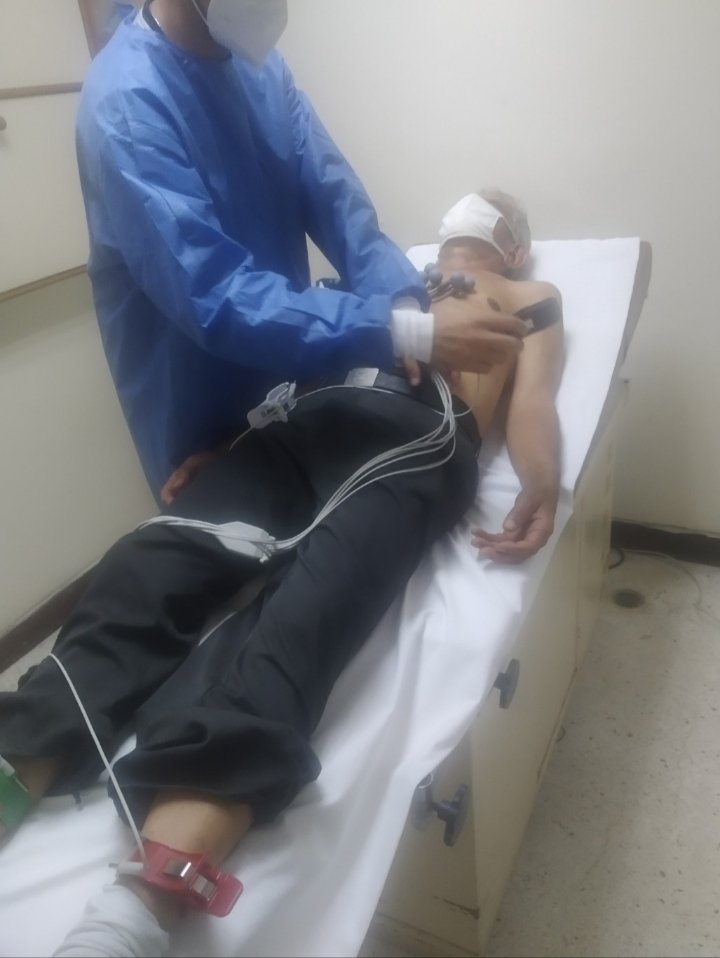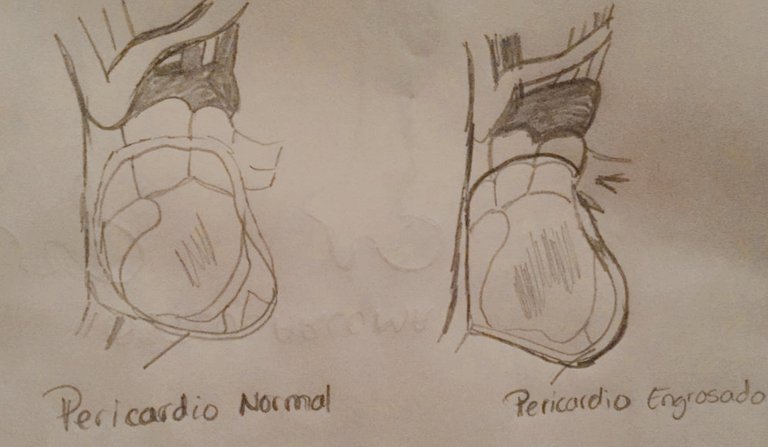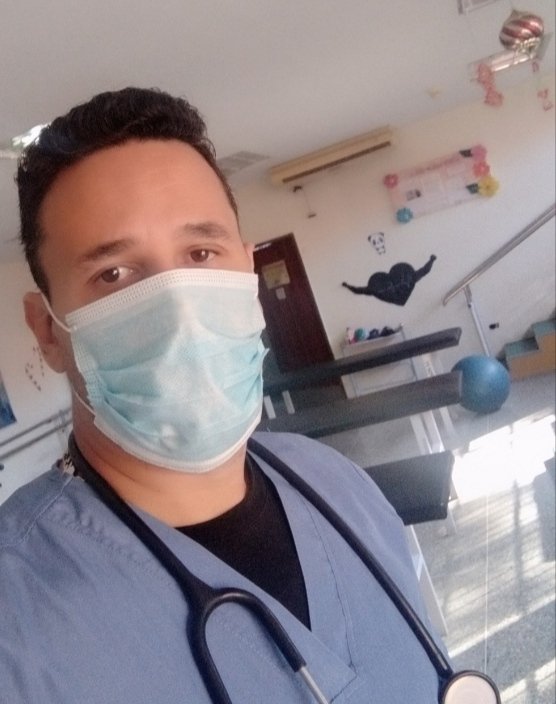Hivers!!! Saludarles siempre es grato, espero como siempre en Dios que estén llenos de salud, vida, buena vibra y porsupuesto rodeados de los seres que aman, pues de eso se trata la vida.
Siguiendo con el ritmo de las publicaciones, mientras el tiempo y el postgrado me lo permitan, voy realizando post en pro de la ciencia y la medicina, también leyendo muchos con información excelsa, de los cuales sin duda aprendo y es que cada aporte enriquece y da vida a esta maravillosa plataforma, que explota talentos de todos los tipos.
Hace unas semanas, llegó al servicio de medicina interna un paciente con una afección poco común (al menos en nuestro servicio), la persona en cuestión tenía una pericarditis constructiva, diagnóstico totalmente desconocido para mí en aquel momento, fue el especialista de turno, quien me oriento sobre esta enfermedad y manejo que más tarde investigue y hoy les comparto.

La Pericarditis Constrictiva:
Es una afección crónica,que causa insuficiencia cardíaca, es poco frecuente y por lo tanto su diagnóstico se hace difícil, en esta entidad clínica hay una inflamación del pericardio (capa externa del corazón), el mismo aumenta su tamaño considerablemente, impidiendo su funciones naturales y afectando el llenado ventricular hacia la diástole.

Entre sus síntomas frecuentes podemos encontrar: Dolor en el centro del pecho (detrás del esternón), que va de leve a severo, extendiéndose al brazo izquierdo, dolor similar al del infarto de miocardio, además disnea, náuseas vomitos, fiebre baja, ansiedad, taquicardia, dolor e inflamación en epigastrio, y con menor frecuencia edemas en miembros inferiores.

En ocasiones, los pacientes manifiestan que el dolor en el pecho disminuye al sentarse o inclinarse hacia adelante, y aumenta al estar de pie y al toser.
Causas:
Dentro de sus causas podemos encontrar, las producidas por alguna infección que pueden generar una inflamación del pericárdico, que pueden ser de tipo viral o bacteriano, tampoco de descartan las pericarditis producidas por radioterapias, cirugías cardíacas previas, así como también las enfermedades que afectan el tejido conectivo o post infecciones.
Es importante resaltar, que a pesar de que la etilogia es variable y está definida pocas veces se logra identificar la causa de forma certera, por lo tanto en más del 50% de esta enfermedad no se identifica el motivo, sobretodo cuando la afección evoluciona en el tiempo.
Diagnóstico:
El diagnóstico habitualmente debe costar de 3 elementos la clínica donde se evaluará los signos y síntomas del paciente, la **fisiológia constrictiva" que se evidenciará por medio de un ecocardiograma Doppler y electrocardiograma, dónde se evidenciará el engrosamiento y cicatrices que puede presentar el pericardio, además de como están los impulsos eléctricos del mismo, y evaluación del pericardio por imágen (Rayos X de tórax, tomografía, o resonancia magnética), dónde se evaluará el grado de afección.
Tratamiento:
Para el tratamiento el médico especialista ( cardiólogo) debe determinar la causa de la afección, el mismo puede indicar tratamientos antibióticos y antiinflamatorios, aunque el 90% de las veces estos pacientes suelen tener resolución quirúrgica.
Debo admitir temas relacionados, con el sistema cardiovascular me apasionan, en un futuro espero poder compartir más de estos temas con ustedes.

Gracias.
Dios siempre de cabrestero.
PD: Fotos y dibujos de mi propiedad.
English:
Hivers! Greeting you is always a pleasure, I hope as always in God that you are full of health, life, good vibes and of course surrounded by the ones you love, because that is what life is all about.
Continuing with the rhythm of the publications, as long as time and the postgraduate degree allow me, I am making posts in favor of science and medicine, also reading many with excellent information, from which I certainly learn and each contribution enriches and gives life to this wonderful platform, which exploits talents of all types.
A few weeks ago, a patient with an uncommon condition (at least in our service) came to the internal medicine service, the person in question had a constructive pericarditis, diagnosis totally unknown to me at that time, was the specialist on duty, who guided me about this disease and management that I later investigated and today I share with you.
Constrictive Pericarditis:
It is a chronic condition that causes heart failure, it is by or frequent and therefore its diagnosis becomes difficult, in this clinical entity there is an inflammation of the pericardium (outer layer of the heart), the same increases its size considerably, preventing its natural functions and affecting ventricular filling into diastole.
Among its frequent symptoms we can find: Pain in the center of the chest (behind the sternum), ranging from mild to severe, extending to the left arm, pain similar to myocardial infarction, also dyspnea, nausea, vomiting, low fever, anxiety, tachycardia, pain and swelling in the epigastrium, and less frequently edema in the lower limbs.
Occasionally patients state that chest pain decreases with sitting or leaning forward, and increases with standing and coughing.
Causes:
Among its causes we can find those produced by some infection that can generate an inflammation of the pericardium, which can be viral or bacterial, pericarditis produced by radiotherapies, previous cardiac surgeries, as well as diseases that affect the connective tissue or post infections are also not discarded.
It is important to emphasize that although the etiology is variable and defined, the cause is rarely identified with certainty, therefore in more than 50% of this disease the reason is not identified, especially when the condition evolves over time.
Diagnosis:
The diagnosis should usually consist of 3 elements: the clinic where the signs and symptoms of the patient will be evaluated, the **constrictive physiology" that will be evidenced by means of a Doppler echocardiogram and electrocardiogram, where the thickening and scars that can present the pericardium will be evidenced, in addition to as they are the electrical impulses of the same one, and evaluation of the pericardium by image (X-rays of thorax, tomography, or magnetic resonance), where the degree of affection will be evaluated.
Treatment:
For the treatment the specialist doctor (cardiologist) must determine the cause of the affection, the same one can indicate antibiotic and anti-inflammatory treatments, although 90% of the times these patients usually have surgical resolution.
I must admit that I am passionate about topics related to the cardiovascular system, in the future I hope to be able to share more of these topics with you.
Thank you.
God always of cabrestero.
Congratulations @arturocajoti86! You have completed the following achievement on the Hive blockchain and have been rewarded with new badge(s):
Your next target is to reach 600 upvotes.
You can view your badges on your board and compare yourself to others in the Ranking
If you no longer want to receive notifications, reply to this comment with the word
STOPTo support your work, I also upvoted your post!
Support the HiveBuzz project. Vote for our proposal!
Su post ha sido valorado por @ramonycajal